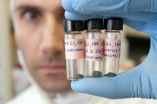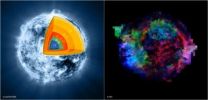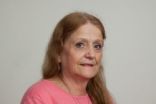(Press-News.org) WASHINGTON -- A proposed study could help determine if there is a link between living near nuclear power plants or other nuclear facilities and having a higher risk of cancer, but challenges and limitations exist, says a new report from the National Research Council, the operating arm of the National Academy of Sciences and National Academy of Engineering. The report recommends that a pilot study be completed first to evaluate the feasibility of a full-scale study, although the ultimate decision about whether to perform either would be the responsibility of the U.S. Nuclear Regulatory Commission (USNRC), which sponsored the Research Council report.
The first phase of a two-phase project, the report identifies scientific approaches for carrying out an assessment of cancer risks for populations near the 104 nuclear reactors and 13 fuel cycle facilities that the USNRC licenses across the U.S. as well as for people who have lived close to former sites. The USNRC requested the report because it has been using the results of a 1990 National Cancer Institute survey as its primary public resource about cancer risks near its nuclear facilities, and that study is now outdated and has limitations.
"Finding scientific evidence of whether people who live near nuclear facilities have a greater risk of developing cancer than those who live farther away is a challenge," said John Burris, chair of the committee that wrote the report and president of Burroughs Wellcome Fund in Research Triangle Park, N.C. "There are issues of whether scientists can get the information needed to carry out the study. For example, some state cancer registries have only recently attained quality data. Also, data may be insufficient to estimate the amount of radioactive material released from nuclear facilities, especially during early years of operations. This makes it much more difficult to determine risks from decades ago when radiation releases from nuclear facilities were larger."
The committee recommended two approaches to the cancer risk study, which could be carried out by the Research Council as the second phase of its project, should the USNRC decide to proceed. One approach would be to investigate rates of cancer occurrence and cancer deaths in small geographic areas within approximately a 30-mile radius of nuclear facilities. The different geographic areas should represent a range of potential exposures from radioactive material releases from the facilities, from the highest to essentially no exposure. Another would be to conduct a record-based, case-control study to assess the association of cancers in children less than 15 years old in relation to their mothers' residential proximity to a nuclear facility during pregnancy. Both approaches would have a sub-analysis focusing on leukemia, the cancer associated with radiation exposure in children.
The committee listed several challenges to carrying out the study, including uneven availability and quality of data on cancer mortality and incidence at geographic levels smaller than the county level and uneven availability of data on the amount of radiation released from nuclear facilities. There also may be limited information on population mobility and potential confounding factors, including exposure to cigarette smoke, access to health care, contact with toxic chemicals, and exposure to other sources of radiation such as from medical procedures like CT scans. The impact of these other possibly immeasurable factors on cancer incidence and mortality could overwhelm the expected effect from the releases of radiation from nuclear facilities. Moreover, the doses resulting from monitored and reported radioactive releases from nuclear facilities are expected to be low. Therefore the cancer risks, if any, are likely small. It is not certain whether a full-scale study would have sufficient statistical power to detect such small effects, if present.
Given these challenges, if the USNRC decides to move forward with the cancer risk study, the committee proposed a pilot study to verify whether the two recommended approaches could be conducted on a large scale and to help estimate the necessary time, costs, and resources. The committee suggested that the pilot study focus on six nuclear power plants and one fuel cycle facility that provide a broad representation of plant designs and operating histories: Dresden, Ill.; Millstone, Conn.; Oyster Creek, N.J.; Haddam Neck, Conn.; Big Rock Point, Mich.; San Onofre, Calif.; and Nuclear Fuel Services, Tenn.
If such a study goes forward, it is essential that the USNRC communicate with and involve the public and other stakeholders in order to broaden acceptance of the results, the report stresses. A plan for stakeholder engagement should be developed prior to the initiation of data gathering and analysis, and it should include processes to identify key stakeholders, assess their perceptions and concerns, communicate the questions that the study would address and its strengths and limitations, and make the data used in the study publicly accessible to the extent possible.
### The study was sponsored by the U.S. Nuclear Regulatory Commission. The National Academy of Sciences, National Academy of Engineering, Institute of Medicine, and National Research Council make up the National Academies. They are independent, nonprofit institutions that provide science, technology, and health policy advice under an 1863 congressional charter. Panel members, who serve pro bono as volunteers, are chosen by the Academies for each study based on their expertise and experience and must satisfy the Academies' conflict-of-interest standards. The resulting consensus reports undergo external peer review before completion. For more information, visit http://national-academies.org/studycommitteprocess.pdf. A committee roster follows.
CONTACTS:
Jennifer Walsh, Media Relations Officer
Luwam Yeibio, Media Relations Assistant
Office of News and Public Information
202-334-2138; e-mail news@nas.edu
Pre-publication copies of ANALYSIS OF CANCER RISKS IN POPULATIONS NEAR NUCLEAR FACILITIES: PHASE 1 is available from the National Academies Press; tel. 202-334-3313 or 1-800-624-6242 or on the Internet at http://www.nap.edu. Reporters may obtain a copy from the Office of News and Public Information (contacts listed above).
NATIONAL RESEARCH COUNCIL
Division on Earth and Life Studies
Nuclear and Radiation Studies Board
Committee on the Analysis of Cancer Risks in Populations Near Nuclear Facilities: Phase 1
John E. Burris (chair)
President
Burroughs Wellcome Fund
Research Triangle Park, N.C.
John C. Bailar III1
Professor Emeritus
Department of Health Studies
University of Chicago (retired)
Washington, D.C.
Harold L. Beck
Director
Environmental Measurements Laboratory
U.S. Department of Energy (retired)
New York City
Andre Bouville
Senior Radiation Physicist
Radiation Epidemiology Branch
National Cancer Institute (retired)
Bethesda, Md.
Phaedra S. Corso
Head
Department of Health Policy and Management
College of Public Health
University of Georgia
Athens
Patricia J. Culligan
Professor
Civil Engineering and Engineering Mechanics
Columbia University
New York City
Paul M. DeLuca Jr.
Professor, and
Provost and Vice Chancellor for Academic Affairs
Department of Medical Physics
University of Wisconsin
Madison
Raymond A. Guilmette
Director
Center for Countermeasures Against Radiation
Lovelace Respiratory Research Institute
Albuquerque, N.M.
George M. Hornberger2
Director
Vanderbilt Institute for Energy and Environment,
Nashville, Tenn.
Margaret R. Karagas
Head Section of Biostatistics and Epidemiology
Dartmouth College
Lebanon, N.H.
Roger E. Kasperson3
Research Professor and Distinguished Scientist
The George Perkins Marsh Institute
Clark University (retired)
Washington, D.C.
James E. Klaunig
Professor and Director
Department of Pharmacology and Toxicology
Indiana University
Bloomington
Timothy Mousseau
Professor of Biological Sciences
University of South Carolina
Columbia
Sharon Murphy
Founding Director
Greehey Children's Cancer Research Institute
University of Texas Health Science Center (retired)
Washington, D.C.
Roy E. Shore
Vice Chairman and Chief of Research
Radiation Effects Research Foundation
Hiroshima
Japan
Daniel O. Stram
Professor
Department of Preventive Medicine
University of Southern California
Los Angeles
Margot Tirmarche
Head
Ionizing Radiation Epidemiology Laboratory
Institute for Radiological Protection and Nuclear Safety
Fontenay-aux-Roses, France
Lance A. Waller
Professor
Department of Biostatistics
Rollins School of Public Health
Emory University
Atlanta
Gayle E. Woloschak
Professor
Department of Radiation Oncology
Northwestern University
Chicago
Jeffrey J. Wong
Deputy Director
Office of Pollution Prevention and Technology Development
Department of Toxic Substances Control
California Environmental Protection Agency
Sacramento
RESEARCH COUNCIL STAFF
Kevin Crowley
Study Director
1 Member, Institute of Medicine
2 Member, National Academy of Engineering
3 Member, National Academy of Sciences
Report presents designs for study of cancer risks near US nuclear facilities
2012-04-02
ELSE PRESS RELEASES FROM THIS DATE:
How quantum physics could make 'The Matrix' more efficient
2012-04-02
Researchers have discovered a new way in which computers based on quantum physics could beat the performance of classical computers. The work, by researchers based in Singapore and the UK, implies that a Matrix-like simulation of reality would require less memory on a quantum computer than on a classical computer. It also hints at a way to investigate whether a deeper theory lies beneath quantum theory. The finding is published 27 March in Nature Communications.
The finding emerges from fundamental consideration of how much information is needed to predict the future. ...
Titanium paternity test fingers Earth as moon's sole parent
2012-04-02
A new chemical analysis of lunar material collected by Apollo astronauts in the 1970s conflicts with the widely held theory that a giant collision between Earth and a Mars-sized object gave birth to the moon 4.5 billion years ago.
In the giant-collision scenario, computer simulations suggest that the moon had two parents: Earth and a hypothetical planetary body that scientists call "Theia." But a comparative analysis of titanium from the moon, Earth and meteorites, published by Junjun Zhang, graduate student in geophysical sciences at the University of Chicago, and four ...
A star explodes and turns inside out
2012-04-02
A new X-ray study of the remains of an exploded star indicates that the supernova that disrupted the massive star may have turned it inside out in the process. Using very long observations of Cassiopeia A (or Cas A), a team of scientists has mapped the distribution elements in the supernova remnant in unprecedented detail. This information shows where the different layers of the pre-supernova star are located three hundred years after the explosion, and provides insight into the nature of the supernova.
An artist's illustration on the left shows a simplified picture ...
Global Provider PerDM Report Record Growth Due to Local Knowledge
2012-04-02
Last week PerDM reported growth of 16% in the first quarter of 2012, an increase of 6% from 2011. The Field Marketing Company's development has been attributed to their ability to provide successful marketing campaigns to businesses of all sizes. PerDM place importance on Nationwide or Global reach while ensuring that local consumer patterns and industry knowledge is obtained from individual markets. The concept of being able to offer and deliver maximum capacity and local expertise are difficult to master but essential to true optimisation.
'Out network of offices offer ...
LSUHSC research finds HPV-related head & neck cancers rising, highest in middle-aged white men
2012-04-02
New Orleans, LA – Research led by Lauren Cole, a public health graduate student, and Dr. Edward Peters, Associate Professor of Public Health and Director of the Epidemiology Program at LSU Health Sciences Center New Orleans, reports that the incidence of head and neck cancer has risen at sites associated with Human Papilloma Virus (HPV) infection, with the greatest increase among middle-aged white men. At the same time, younger, Non-Hispanic blacks experienced a substantial decrease in these cancers. They also found that the disease process for tumors associated with HPV ...
Dr Jill is a ProU Legacy2 Mastermind Graduate
2012-04-02
There were only 16 seats for this seminar that included over the shoulder work from some of the founders of ProU to jump start our businesses. There were many many more applicants to these seats than the event could hold and Dr Jill was lucky enough to get one of the seats. Dr Jill stated that it was a fast paced detailed, informative seminar. The one-on-one critique of the assignments that each participant brought with them was the best part of the weekend. Dr Jill now feels even more confident in her marketing endeavors with ProU. She is sure that she made the correct ...
Montana State study compares growth around Yellowstone, Glacier and other national parks
2012-04-02
BOZEMAN, Mont. – The land around Yellowstone and Glacier national parks might look like it's filling up with people and houses, but it's nothing compared to the rate of development around some other U.S. national parks, according to a new Montana State University study.
While population densities rose 246 percent around Yellowstone/Grand Teton and 210 percent around Glacier between 1940 and 2000, they surged 3,092 percent around the Mojave National Preserve in California, 2,962 percent around the Colorado River parks and almost 2,473 percent around the Everglades National ...
A new breast cancer susceptibility gene
2012-04-02
SALT LAKE CITY -- Mutations in a gene called XRCC2 cause increased breast cancer risk, according to a study published today in the American Journal of Human Genetics. The study looked at families that have a history of the disease but do not have mutations in the currently known breast cancer susceptibility genes.
Sean Tavtigian, Ph.D., a Huntsman Cancer Institute (HCI) investigator and associate professor in the Department of Oncological Sciences at the University of Utah (U of U) is one of three co-principal investigators on the study, along with David Goldgar, Ph.D., ...
Autism Speaks demands urgent response to the autism epidemic in new CDC prevalence estimates
2012-04-02
NEW YORK, N.Y. – Autism Speaks, the world's leading autism science and advocacy organization, today called on the nation's elected and appointed leaders to immediately develop a new, coordinated strategy to take on a national public health emergency – the autism epidemic – in the wake of a new report from the U.S. Centers for Disease Control (CDC) finding that autism is now diagnosed in a staggering 1 in every 88 American children.
Bob Wright, co-founder of Autism Speaks, said, "We have an epidemic on our hands. The costs are staggering and will continue to rise as prevalence ...
Designer Consignment Shop Appears on NBC 7 San Diego
2012-04-02
Authentic Luxury Goods (ALG), San Diego's designer consignment shop, has been featured in a recent special report by Consumer Bob on NBC 7 San Diego. Consumer Bob shows viewers "how they can make money selling their high-fashion accessories" by spotlighting the ALG boutique, which specializes in buying and selling lightly used designer handbags, shoes, jewelry, and watches.
Authentic Luxury Goods was founded last year by Joy Blackburn, who saw that San Diego women were longing for a special kind of consignment store, one that would deal exclusively in upscale ...




